|
 |
| These highly modular LED rear projection units use a high-definition combination of cross-prism screens developed by DNP (with an external light absorption lens structure of 65μm pitch vertically and horizontally). |
 |
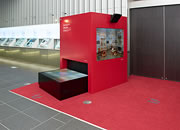 |
|
 |
 |
 |
 |
Augmented Reality applied to a paper pamphlet |
 |
 |
|
 |
| Museum Lab has already provided offerings using Augmented Reality technology. This time, image recognition technology -able to distinguish which page an explanatory paper pamphlet is open at or where the pamphlet has been set down- allows further information relevant to that page to be projected. |
 |
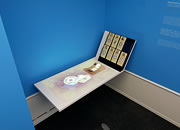 |
|
|
 |
| Not only does digitizing the caption panels make it possible to offer more information, but also to provide a multilingual offering (French, English, and Japanese). |
 |
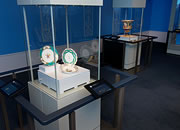 |
|
|
 |
DRARE is a 3D computer-generated imagery viewing software specifically developed by DNP.
A 3D model is created from a high-definition laser measurement of the exhibited work, allowing the work to be seen from various angles. This model is used in conjunction with ultra high-definition images (close-up shots) of the work's detail to provide a degree of seamless coverage impossible with a conventional 3D computer-generated imagery viewer alone. |
 |
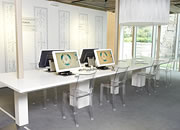 |
|
|
 |
| DNP has developed a gesture interface using a remote image sensor in order to operate a multimedia device incorporated within a display case. |
 |
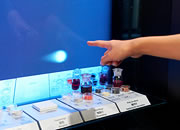 |
|
|
 |
| "Twist ball type" electronic paper (using bistable liquid crystal) provides a power-saving, high-contrast solution for enhanced visibility and legibility in the exhibition's signage. |
 |
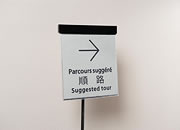 |
|